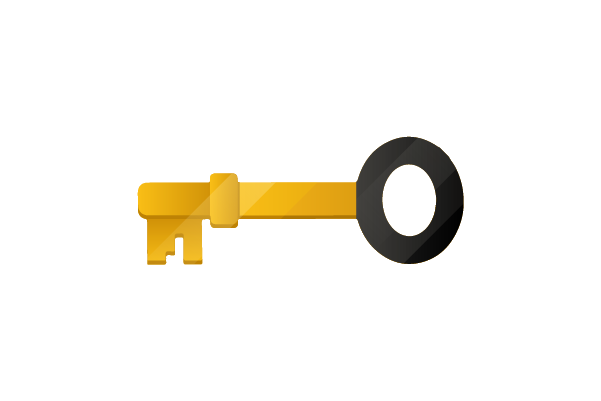Defi Staking Platform Development: Key Steps and Considerations

To navigate the intricate path towards building a successful DeFi staking platform, one must meticulously plan and consider the key steps and critical factors that can spell the difference between success and obscurity. This comprehensive guide delves into the foundational aspects of DeFi staking platform development, shedding light on the essential steps and considerations that developers, entrepreneurs, and crypto enthusiasts must embrace in their quest to make a mark in the ever-evolving world of decentralized finance. Whether you’re an industry veteran or a newcomer eager to contribute to the DeFi revolution, the insights within this guide serve as a compass, illuminating the path toward a prosperous and innovative DeFi staking platform.
What is DeFi Staking?
DeFi, short for Decentralized Finance, has emerged as a groundbreaking force within the cryptocurrency and blockchain space, reshaping the traditional financial landscape. Among the myriad DeFi applications and services, one of the most prominent and widely adopted is DeFi staking.
DeFi staking represents the fusion of decentralized finance and staking, a concept deeply rooted in the world of blockchain. At its core, DeFi staking allows individuals to participate in the validation of blockchain transactions and the governance of DeFi protocols while earning rewards in the form of cryptocurrencies.
 Unlike traditional financial systems where intermediaries play a pivotal role in managing and governing financial assets, DeFi staking operates on the principles of decentralization and trustlessness, allowing users to directly interact with smart contracts and contribute to network security and stability.
Unlike traditional financial systems where intermediaries play a pivotal role in managing and governing financial assets, DeFi staking operates on the principles of decentralization and trustlessness, allowing users to directly interact with smart contracts and contribute to network security and stability.
DeFi staking is typically associated with proof-of-stake (PoS) blockchain networks, where validators are chosen to create new blocks and secure the network based on the amount of cryptocurrency they “stake” as collateral. In return for their participation, these validators earn staking rewards, usually in the same cryptocurrency they staked.
DeFi has taken this concept a step further by creating decentralized applications (dApps) and platforms that facilitate staking for a wide range of digital assets beyond the native cryptocurrency of a single blockchain. This expansion has unlocked a wealth of opportunities for crypto holders, allowing them to put their assets to work and generate passive income through various DeFi staking protocols.
Moreover, DeFi staking platforms often integrate additional features, such as liquidity provision, yield farming, and governance participation. This means that users can not only stake their assets but also engage in activities that maximize their returns and influence the direction of DeFi projects.
DeFi staking platforms offer a degree of flexibility and accessibility that was previously unheard of in traditional finance, making it an attractive option for both seasoned crypto enthusiasts and newcomers looking to dip their toes into the decentralized financial ecosystem.
However, as with any innovative technology, DeFi staking comes with its own set of risks and complexities. Security vulnerabilities, smart contract risks, and the volatility of the cryptocurrency market are just a few of the challenges that users need to navigate. Therefore, it’s crucial for anyone interested in DeFi staking to conduct thorough research, exercise caution, and make informed decisions.
As the DeFi ecosystem continues to evolve and mature, DeFi staking is likely to remain a cornerstone of this transformative movement, offering financial empowerment, transparency, and decentralization to a global audience seeking alternatives to traditional finance.
Explanations : Types of DeFi Staking
DeFi staking has evolved into a multifaceted ecosystem, offering various types of staking opportunities that cater to different preferences and risk appetites within the decentralized finance space. Understanding these types is crucial for participants looking to harness the potential of DeFi staking fully.
1 Liquidity Staking
Liquidity staking is one of the most common forms of DeFi staking. It involves users providing liquidity to decentralized exchanges (DEXs) by depositing their assets into liquidity pools. These users are rewarded with fees generated by the trading activity on the DEX, and their returns are directly proportional to the amount of liquidity they provide. Popular platforms like Uniswap and SushiSwap have made liquidity staking accessible to users, allowing them to earn rewards while contributing to the liquidity and efficiency of decentralized markets.
2. Yield Farming
Yield farming, also known as liquidity mining, is an advanced form of DeFi staking. It involves users locking up their assets in smart contracts or protocols to earn rewards, often in the form of governance tokens or additional cryptocurrency. Yield farmers often move their assets between different protocols to optimize their returns, which can be lucrative but also carry higher risks due to the complexity and potential impermanent loss associated with liquidity provision.
3. Governance Staking
Governance tokens are a central component of many DeFi projects, enabling token holders to vote on proposals and decisions affecting the platform’s development and future. Participants in governance staking lock their tokens in a smart contract and receive voting power proportional to their stake. In return, they can influence the direction and decision-making processes of the DeFi project while receiving rewards in the form of governance tokens or other incentives.
4. Validator Staking
Validator staking is closely associated with proof-of-stake (PoS) blockchains like Ethereum 2.0, Cardano, and Polkadot. Validators are responsible for validating transactions and maintaining the network’s security and consensus. Users can become validators by staking a significant amount of the native cryptocurrency, and in return, they earn staking rewards. This form of staking offers a more direct and secure way to participate in network validation but often requires a substantial initial stake and technical expertise.
5. Derivative Staking
Derivative staking products have emerged as a way for users to gain exposure to staking rewards without actually holding the underlying assets. These financial instruments allow users to stake synthetic or derivative tokens, which are backed by the staked assets’ rewards. This type of staking appeals to traders and investors seeking to speculate on staking rewards without directly holding the staked assets.
Understanding the various types of DeFi staking options is crucial for participants in the decentralized finance ecosystem. Each type comes with its own risk profile, rewards structure, and requirements, and choosing the right one depends on individual goals and risk tolerance. As the DeFi space continues to innovate and expand, it’s essential for users to stay informed and adapt to the ever-evolving landscape of DeFi staking opportunities.
Key Features of a DeFi Staking Platform
A DeFi staking platform is a critical component of the decentralized finance ecosystem, and its success often hinges on the presence of key features that cater to both users and developers. These features not only enhance user experience but also ensure the security, transparency, and efficiency of the platform.
- User-Friendly Interface: An intuitive and user-friendly interface is paramount. It should allow users to easily navigate the platform, stake their assets, and monitor their staking activity. Clear and concise dashboards, interactive charts, and user-friendly instructions are essential for a positive user experience.
- Multi-Asset Support: To attract a diverse user base, a DeFi staking platform should support a wide range of cryptocurrencies and tokens. Users should have the flexibility to stake their preferred assets, whether they are native tokens or popular ERC-20 tokens.
- Secure Smart Contracts: The heart of any DeFi staking platform lies in its smart contracts. These contracts should be meticulously audited and thoroughly tested to ensure they are secure and resilient against vulnerabilities. Users need to trust that their assets are safe when staked.
- Liquidity Provision: Some of the best DeFi staking platforms also allow users to provide liquidity to decentralized exchanges (DEXs) while staking. This dual-functionality enhances users’ earning potential and contributes to the liquidity of the broader DeFi ecosystem.
- Staking Pools: Staking pools offer a convenient way for users to participate in staking, especially for those who lack the technical knowledge or resources to run their own nodes. Users can pool their assets with others, increasing their chances of earning rewards.
- Rewards Distribution: An automated rewards distribution system ensures that users receive their staking rewards promptly and fairly. Transparency in how rewards are calculated and distributed is crucial for user trust.
- Flexible Withdrawals: Users should have the flexibility to withdraw their staked assets or rewards at any time. A well-designed DeFi staking platform offers options for both instant and scheduled withdrawals, allowing users to manage their assets according to their preferences.
- Governance Integration: For more advanced users, governance participation can be a key feature. A platform that integrates governance tokens allows users to have a say in the platform’s decision-making processes, further engaging the community.
- Documentation and Support: Comprehensive documentation and responsive customer support are invaluable. Users should have access to guides, FAQs, and a support team to assist with any issues or queries they may encounter.
- Security Measures: Security features like two-factor authentication (2FA) and insurance against smart contract vulnerabilities add an extra layer of protection for users’ assets.
- Community and Social Features: Building a strong community around the platform can enhance user engagement. Features like forums, chat rooms, and social integration can foster a sense of belonging and collaboration among users.
- Regular Audits and Updates: A commitment to ongoing security audits and platform updates is vital. The crypto space evolves rapidly, and a proactive approach to maintenance helps ensure the platform remains robust and up-to-date.
A successful DeFi staking platform combines user-centric design, security, flexibility, and community engagement to provide a seamless staking experience. These key features not only attract users but also contribute to the platform’s long-term sustainability and growth within the dynamic world of decentralized finance.
How To Develop A DeFi Staking Platform?
Developing a DeFi staking platform is a complex endeavor that requires careful planning, technical expertise, and a deep understanding of the decentralized finance landscape. Below, we outline the essential steps and considerations involved in developing such a platform.
- Conceptualization and Research: Begin by defining the scope and objectives of your DeFi staking platform. Research the existing DeFi staking solutions to identify gaps and areas for improvement. Understanding the needs of potential users and market trends is crucial at this stage.
- Select the Blockchain: Choose a blockchain platform that aligns with your project’s goals. Most DeFi staking platforms are built on Ethereum due to its established ecosystem and smart contract capabilities. However, other blockchains like Binance Smart Chain, Polkadot, or Solana may also be viable options.
- Smart Contract Development: Smart contracts are the backbone of any DeFi staking platform. Develop secure and audited smart contracts for staking, rewards distribution, and governance if applicable. Contract audits by reputable firms are essential to ensure security.
- Frontend Development: Create a user-friendly frontend interface that allows users to interact with your platform. Ensure it’s responsive, intuitive, and accessible across various devices and browsers. Implement robust security measures to protect user data.
- Liquidity Provision: If your platform incorporates liquidity provision alongside staking, you’ll need to integrate with decentralized exchanges (DEXs) like Uniswap or PancakeSwap. Develop APIs or interfaces for seamless integration with these DEXs.
- Staking Pools: If your platform supports staking pools, design the architecture to allow users to pool their assets and stake collectively. Implement features for users to create and manage their own pools.
- Rewards Distribution: Develop an automated rewards distribution system that calculates and disburses rewards to stakers regularly. Ensure transparency in how rewards are determined and distributed.
- Governance Integration: If governance participation is part of your platform’s functionality, integrate governance tokens and create mechanisms for users to participate in decision-making processes.
- Security Measures: Implement robust security measures to protect user assets and data. Use industry best practices for security, conduct regular audits, and consider purchasing insurance against smart contract vulnerabilities.
- Testing and Quality Assurance: Thoroughly test your platform in various environments, conducting both unit testing and end-to-end testing. Address and fix any bugs or issues that arise during testing to ensure a smooth user experience.
- Documentation: Create comprehensive documentation, including user guides, FAQs, and developer documentation. Clear documentation is essential for users and developers looking to interact with your platform.
- Compliance and Legal Considerations: Ensure compliance with relevant regulations in the jurisdictions where your platform operates. Consult legal experts to navigate the complex regulatory landscape of DeFi.
- Launch and Marketing: Launch your DeFi staking platform and execute a marketing strategy to attract users. Engage with the crypto community through social media, forums, and partnerships to promote your platform.
- Community Building: Foster a strong community around your platform to encourage user engagement and feedback. Social features like forums, chat rooms, and community events can help build a loyal user base.
- Ongoing Maintenance and Updates: Commit to continuous maintenance, security audits, and updates to adapt to evolving market trends and address any emerging issues promptly.
Developing a DeFi staking platform is a dynamic process that requires ongoing dedication and innovation. Collaboration with experienced blockchain developers, security experts, and legal advisors can significantly enhance your platform’s chances of success in the competitive DeFi landscape.
How Does DeFi Staking Platform Development Work?
In the world of blockchain and decentralized finance (DeFi), staking has emerged as a revolutionary concept that allows users to participate in network validation, governance, and earn rewards.
 DeFi staking platforms play a pivotal role in facilitating this process, making it accessible to a broader audience. In this article, we will delve into how DeFi staking platform development works, exploring the key components and steps involved.
DeFi staking platforms play a pivotal role in facilitating this process, making it accessible to a broader audience. In this article, we will delve into how DeFi staking platform development works, exploring the key components and steps involved.
Understanding the Basics of DeFi Staking
Before diving into the intricacies of DeFi staking platform development, it’s essential to grasp the fundamentals. DeFi staking is a process that enables users to lock up their cryptocurrency assets in a smart contract, contributing to the security and operation of a blockchain network. In return for this participation, users receive rewards, typically in the form of additional cryptocurrency tokens.
Key Components of DeFi Staking Platform Development

- Smart Contracts: Smart contracts are the core of any DeFi staking platform. These self-executing contracts automate the staking process, manage user funds securely, and distribute rewards based on predefined rules. Developing secure and audited smart contracts is crucial to the platform’s integrity.
- User Interface: The user interface (UI) is what users interact with when using a DeFi staking platform. It should be intuitive, user-friendly, and responsive, enabling users to stake their assets, monitor their staking activity, and access other platform features.
- Blockchain Integration: DeFi staking platforms are typically built on specific blockchains, such as Ethereum or Binance Smart Chain. Integration with the chosen blockchain is necessary for users to interact with the platform using their preferred assets.
- Staking Pools: Many DeFi staking platforms offer staking pools, allowing users to pool their assets with others. These pools increase the chances of earning rewards by collectively staking a larger amount of cryptocurrency.
- Rewards Distribution Mechanism: An automated rewards distribution system calculates and distributes rewards to stakers regularly. This mechanism ensures transparency and fairness in how rewards are allocated.
- Governance Integration: Some DeFi staking platforms incorporate governance tokens, allowing users to participate in decision-making processes. Integrating these tokens and the associated governance features can enhance user engagement and platform development.
Development Process
The development process of a DeFi staking platform involves several stages:
- Conceptualization: Define the platform’s goals, target audience, and unique selling points. Research existing DeFi staking solutions to identify gaps and opportunities.
- Smart Contract Development: Create, test, and audit the smart contracts responsible for staking, rewards distribution, and governance.
- User Interface Development: Design and develop a user-friendly frontend interface that communicates with the smart contracts on the blockchain.
- Integration: Integrate with the chosen blockchain and, if applicable, with decentralized exchanges (DEXs) for liquidity provision.
- Testing and Security Audits: Conduct extensive testing and security audits to identify and rectify any vulnerabilities or issues in the platform.
- Launch and Marketing: Launch the platform and execute a marketing strategy to attract users. Engage with the crypto community to promote your platform.
- Community Building: Foster a strong user community through forums, chat rooms, and social media engagement.
- Ongoing Maintenance and Updates: Continuously monitor and maintain the platform, addressing issues, implementing updates, and staying compliant with regulations.
Conclusion
The landscape of decentralized finance (DeFi) staking platform development is as dynamic and transformative as the industry it serves. This journey, marked by innovation and the pursuit of financial inclusivity, demands careful planning, continuous learning, and a steadfast commitment to excellence. As we have explored the key steps and considerations in this guide, it becomes evident that the successful creation of a DeFi staking platform is not just about technology; it’s about trust, transparency, and the empowerment of individuals in the ever-evolving world of finance.
DeFi staking platforms are more than just software; they are vehicles of financial independence, granting users control over their assets and participation in the global economy. To thrive in this space, one must prioritize security, user experience, and community engagement. Regular security audits, intuitive user interfaces, and robust support mechanisms are not optional but imperative.
Moreover, understanding the regulatory landscape is vital. Compliance with local and global regulations is essential to ensure the long-term sustainability of your platform and to protect both users and stakeholders. As you embark on your journey of DeFi staking platform development, remember that innovation knows no bounds in the blockchain space. Keep an eye on emerging technologies, stay connected with the crypto community, and be open to adapting and evolving your platform to meet the changing needs and trends within DeFi.
Ultimately, the creation of a DeFi staking platform is not just a technical endeavor; it’s a commitment to fostering financial empowerment and reshaping the future of finance. By following the key steps and considerations outlined in this guide, you can embark on this journey with confidence, knowing that you have the knowledge and tools to make a meaningful impact in the world of decentralized finance. As the DeFi ecosystem continues to evolve, your platform can serve as a beacon of innovation and financial liberation, driving positive change for individuals across the globe.
Disclaimer: The information provided by Snap Innovations in this article is intended for general informational purposes and does not reflect the company’s opinion. It is not intended as investment advice or recommendations. Readers are strongly advised to conduct their own thorough research and consult with a qualified financial advisor before making any financial decisions.
Joshua Soriano
I’m Joshua Soriano, a technology specialist focused on AI, blockchain innovation, and fintech solutions. Over the years, I’ve dedicated my career to building intelligent systems that improve how data is processed, how financial markets operate, and how digital ecosystems scale securely.
My work spans across developing AI-driven trading technologies, designing blockchain architectures, and creating custom fintech platforms for institutions and professional traders. I’m passionate about solving complex technical problems from optimizing trading performance to implementing decentralized infrastructures that enhance transparency and trust.

